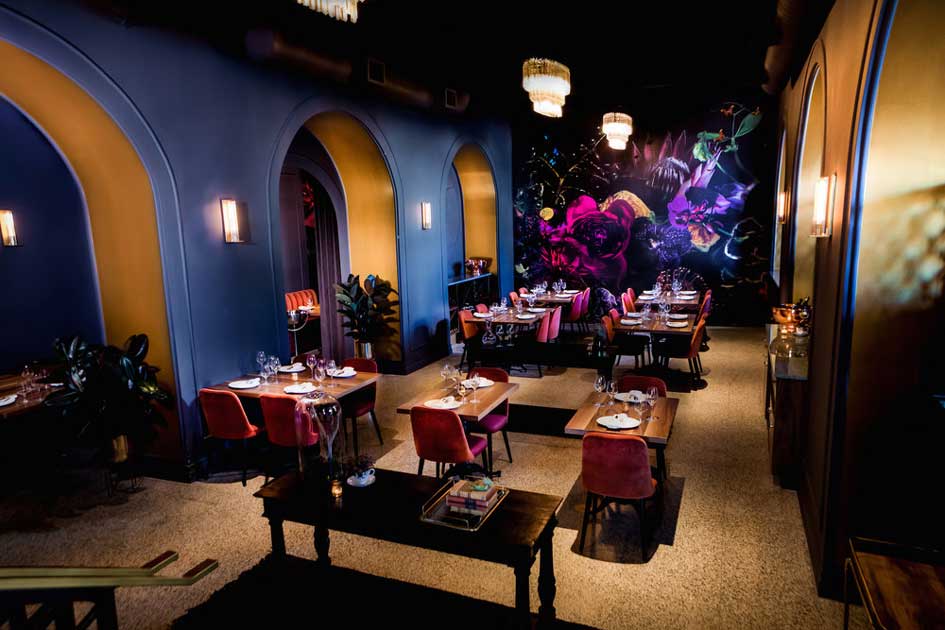Instagrammable Restaurants Islamabad: Picture-Perfect Dining Knowledge
Instagrammable Restaurants Islamabad: Picture-Perfect Dining Knowledge
Blog Article
Savor Genuine Eastern Cuisine With a Pan-Asian Spin for a Culinary Adventure
Getting started on a cooking journey through genuine Eastern cuisine, improved with a Pan-Asian spin, supplies a special chance to check out the rich tapestry of tastes that specify the region's varied cooking customs. This experience welcomes you to enjoy the charming equilibrium of tastes-- wonderful, salty, spicy, and sour-- harmonized by aromatic natural herbs and flavors. Envision the cutting-edge fusion of Thai curry and ramen or the unforeseen pleasure of sushi burritos. As you ponder these tempting meals, take into consideration the cultural narratives and historic influences that shape them, each bite offering a story waiting to be uncovered.

Exploring Pan-Asian Tastes
In the world of international gastronomy, Pan-Asian cuisine stands out for its impressive diversity and the harmonious interaction of flavors from numerous Asian cultures. This culinary approach commemorates the unique ingredients and rich traditions located across the continent, developing a tapestry of preferences that is both rewarding and fascinating. Trick to Pan-Asian food is its ability to balance different flavors-- sweet, salted, spicy, and sour-- while highlighting the freshness and quality of each active ingredient.
From the umami-rich soy sauce of Japan to the intense chili peppers of Thailand, Pan-Asian cuisine offers a comprehensive palette of tastes. These aspects are frequently incorporated in inventive means, improving dishes with layers of complexity. As an example, the usage of aromatic herbs such as lemongrass and cilantro, usual in Vietnamese and Thai cuisine, adds a refreshing illumination to dishes, while the unification of coconut milk delivers a luscious, rich appearance.
The emphasis on fresh fruit and vegetables and aromatic flavors makes certain that each dish is not just a feast for the taste but also for the senses. Pan-Asian food welcomes restaurants to get started on a culinary journey, checking out the substantial and varied landscapes of Oriental gastronomy with every bite.
Fusion Meals to Attempt
While Pan-Asian food is commemorated for its traditional tastes, the modern cooking landscape is increasingly embracing combination recipes that blend these timeless aspects with impacts from other regions. This ingenious method not just honors the rich heritage of Eastern cookeries but likewise presents novel preference experiences that attract modern palates.
An archetype of such a fusion recipe is the Korean-Mexican taco, where marinaded bulgogi beef is covered in a cozy tortilla, covered with kimchi and a zesty gochujang-infused salsa. This combination weds the vibrant, tasty flavors of Korea with the vibrant, fresh components of Mexican cuisine. In a similar way, sushi burritos have obtained appeal, amalgamating the fragile creativity of Japanese sushi with the hearty, hand-held comfort of a burrito, commonly including fusion active ingredients like tempura shrimp and avocado with a drizzle of wasabi mayo.
One more notable dish is Thai curry ramen, which infuses the velvety, fragrant flavors of Thai curry into the reassuring broth of standard Japanese ramen, producing an unified mix that entices the senses. These combination meals expand beyond mere novelty; they represent a cooking dialogue between cultures, urging expedition and technology on the planet of Pan-Asian food.
Crucial Active Ingredients and Seasonings
To truly value Pan-Asian food, one should comprehend the vital active ingredients and flavors that form its structure. This varied culinary style attracts from a rich tapestry of Eastern practices, employing an unified mix of tastes and appearances. Secret active ingredients consist of soy sauce, fish sauce, and oyster sauce, which impart a tasty umami deepness important to Eastern dishes. Complementary to these are rice vinegar and mirin, providing a delicate acidity and sweetness.
Fragrant components are essential, with garlic, lemongrass, and ginger being common throughout numerous Pan-Asian recipes. These active ingredients give a great smelling base that boosts the complexity of tastes. Flavors such as star anise, cardamom, and cinnamon present warmth and character, resembling impacts from regions like China and India.

Food Preparation Techniques and Tips
Understanding the art of Pan-Asian cuisine needs experience with its unique food preparation strategies, each contributing to the vivid tapestry of tastes this culinary practice is celebrated for. Central to these approaches is the stir-fry, a rapid food sake sushi preparation technique that protects the dietary honesty and vivid colors of active ingredients. Using a frying pan, the stir-fry method permits also heat circulation, crucial for accomplishing the particular structure and taste equilibrium of Pan-Asian recipes.
An additional fundamental technique is steaming, specifically prevalent in Chinese cuisine. This mild approach preserves the all-natural tastes and nutrients of active ingredients, making it excellent for seafood and veggies. Dumplings, a precious staple, often take advantage of steaming, causing soft, delicious appearances.
Cooking, likewise important, gives great smoky midsts to meals such as Oriental bulgogi or Japanese yakitori (asian restaurant isb). This method usually entails marinating components, enabling tastes to permeate deeply prior to food preparation over an open fire or warmer
Finally, grasping the art of balancing tastes-- pleasant, sour, salty, bitter, and umami-- is crucial. Appropriately layering these components can boost a recipe from common to remarkable, providing a facility and pleasing cooking experience that symbolizes the significance of Pan-Asian cuisine.
Dining Experiences Worldwide
Throughout the world, Pan-Asian cuisine supplies an exceptional straight from the source eating experience, commemorated for its abundant tapestry of flavors and vivid discussions. This culinary sensation has actually gone beyond cultural boundaries, recording the hearts and palates of food fanatics worldwide. In worldwide cities fresh York, London, and Sydney, Pan-Asian restaurants offer as fusions where cooking customs from Thailand, Japan, China, and beyond converge, giving diners with a diverse mix of recipes that highlight the area's diversity.
The pampano international appeal of Pan-Asian cuisine lies in its capability to provide both credibility and development. Cooks masterfully marry standard components such as lemongrass, soy sauce, and miso with contemporary strategies, leading to recipes that are both refreshingly new and familiar. This combination enables restaurants to begin on a culinary journey that values heritage while embracing modernity.
Moreover, dining experiences are elevated via attentively designed environments that show the principles of Pan-Asian aesthetics. From minimal Japanese-inspired interiors to vibrant Thai-themed areas, each restaurant supplies an unique setting that complements the cooking offerings. Because of this, clients are not simply eating a dish but partaking in a social experience, making Pan-Asian dining a truly international phenomenon.
Conclusion
The exploration of Pan-Asian food supplies a profound understanding of the detailed interaction of tastes and cooking practices across Asia. By embracing fusion meals such as Thai curry ramen and sushi burritos, the culinary journey not just highlights the versatility of conventional active ingredients however likewise showcases ingenious modern-day techniques. This gastronomic adventure, enhanced by cooking techniques and vital flavors, provides an one-of-a-kind possibility to appreciate the cultural diversity and cooking virtuosity that define Pan-Asian cuisine on a global scale.
Getting started on a culinary journey via genuine Eastern cuisine, improved with a Pan-Asian spin, uses an one-of-a-kind opportunity to explore the rich tapestry of flavors that define the region's diverse cooking traditions.In the world of global gastronomy, Pan-Asian cuisine stands out for its amazing diversity and the unified interaction of flavors from different Asian societies. Secret to Pan-Asian cuisine is its capacity to stabilize contrasting tastes-- sweet, salty, spicy, and sour-- while highlighting the quality and top quality of each component.

Report this page